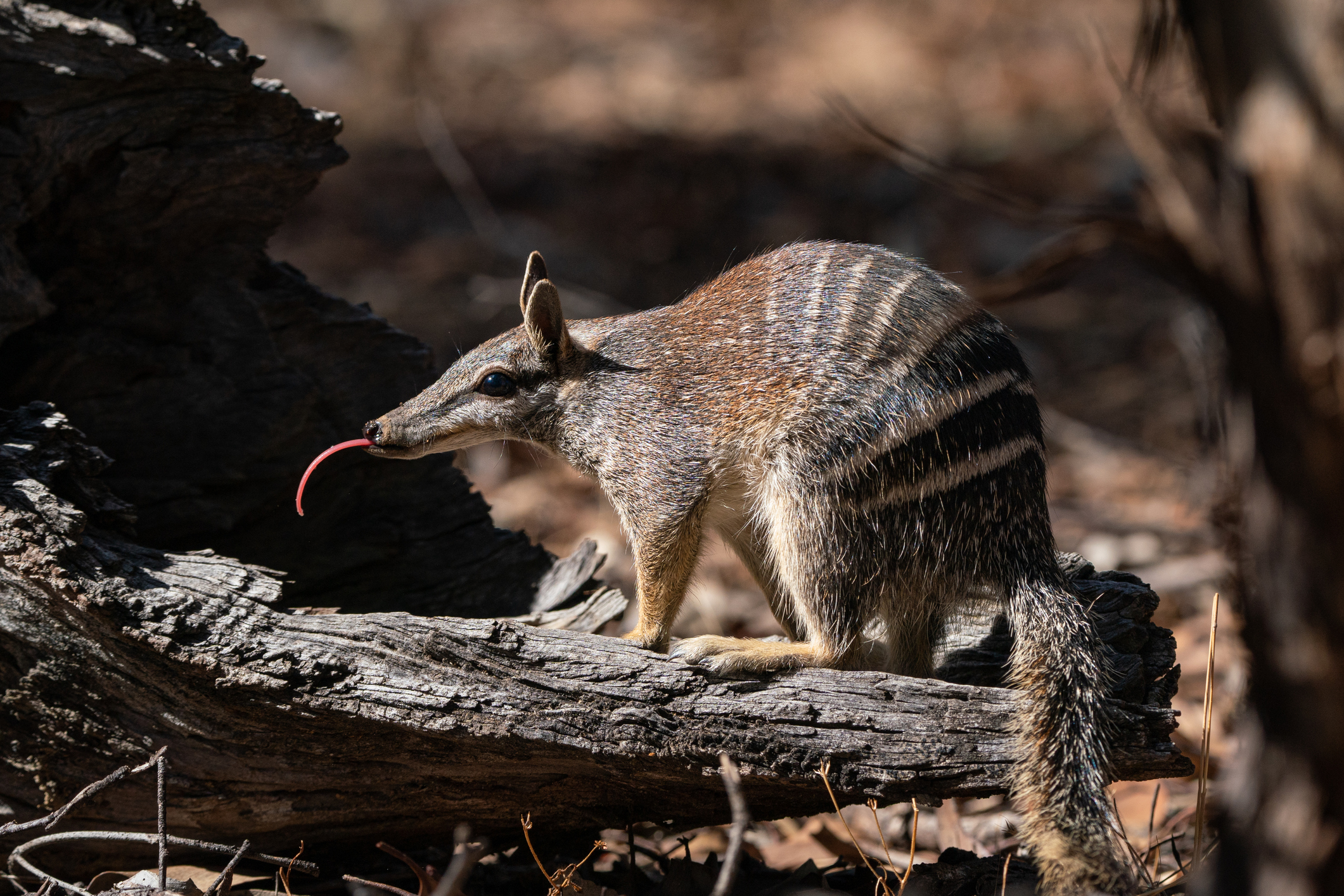With Long Tongues and Protective Rumps, Here Are 8 Facts About Australia’s Numbat
Posted on Categories Discover Magazine

If you don’t live in Australia, you may never have seen a numbat — even if you do, you may still have never seen one. The numbat is small, well-camouflaged, and … there aren’t many to see. That’s because they’re endangered.
Though its territory once covered most of the bottom half of Australia, from the west of New South Wales to Western Australia, the numbat is now limited to two indigenous populations in southwest Western Australia (Dryandra National Park and the Upper Warren region) and several reintroduced populations in predator-proof enclosures and predator-controlled areas, explains Sian Thorn.
Thorn is a biologist and researcher who studies numbats at the University of Western Australia in Perth. In 2022, Thorn and colleagues published a study showing that remote-sensor camera traps effectively got accurate counts of numbats in the wild. Their research provided a happy bonus: They found more numbats than expected. Sadly, however, the total population is still only around 2,500 individuals.
“Numbats are very hard to spot in the wild, so they’re a bit of a treasure species to actually see,” says Thorn. “Even within the context of Australian wildlife, numbats are very unique.”
Thorn and her colleagues are working to save this unique marsupial. Meanwhile, we can enjoy some cool facts about numbats:
1. They’re Related to the Tasmania Tiger
Though numbats are marsupials, they aren’t closely related to any other living marsupial. One of their closest relatives is the now-extinct thylacine, also known as the Tasmanian Tiger.
Read More: The Tasmanian Tiger May Have a “Small Chance” of Survival
2. Their Tongue is Almost Half Their Length
(Credit: Ken Griffiths/Shutterstock)
Numbats are small — only about eight to 10 inches long, not counting their tails (which can add another five to eight inches). But their tongues are, on average, about four inches long.
3. They Eat Lots and Lots of Termites!
Numbats eat termites, and only termites (except for the occasional accidental ant, says Thorn). But they eat a lot of them. A single numbat can eat up to 20,000 termites a day!
Read More: How Do Animals Know What Their Predators Are?
4. Their Tongue is a Mighty Tool
(Credit: Martin Pelanek/Shutterstock)
Numbats are far too small to break open termite mounds. They use a different technique. They stick their long, pointy noses into holes in the ground and use their sense of smell to locate termite galleries, the passages that termites use when going to and from their nests. Then, they dig a hole into the passage and use their long, sticky, anteater-like tongues to reach down and slurp up termites as they pass by.
5. Numbats Don’t Have Teeth
Because they don’t need to chew their food, numbats don’t have teeth, just blunt pegs. They also don’t need to drink water; they get all they need from the termites they eat!
6. Non-Native Predators Are Their Biggest Threat, but They Use Their Rumps for Protection
(Credit: Martin Pelanek/Shutterstock)
Habitat loss and fragmentation from clearing were major contributors to the decline in numbat populations. Today, however, the biggest threats are non-native predators, such as foxes and feral cats. However, when predators threaten their burrows, numbats can block the entrance with their rumps.
Read More: 5 Unique Ways Animals Avoid Getting Eaten
7. Numbat Babies Latch On For Months
Numbats have one of the shortest gestation periods of any mammal (14 days). The young are born underdeveloped and must make their way up to their mother’s nipples, where they attach and continue to develop.
Unlike kangaroos, baby numbats don’t find a pouch when they get there. Instead, they hang on to their mother’s stomach while staying permanently attached to the nipple until they get so big the mother can’t walk around — usually at about six to seven months.
By this time, they’re old enough to be left in a nest in the burrow, where they stay another couple of months until they’re old enough to sunbathe outside the entrance to the burrow.
8. Numbats are Masters of Camouflage
(Credit: Martin Pelanek/Shutterstock)
Numbats’ striped fur provides excellent camouflage in woodland habitats, which is one reason it’s so hard for scientists to study them in the wild. Every numbat has a unique pattern of stripes, and the pattern is different on each side of the body. This fact about numbat markings aided Thorn and her fellow scientists in identifying specific animals.
Read More: Read More: How Did Animals Get Their Spots and Stripes?
Article Sources
Our writers at Discovermagazine.com use peer-reviewed studies and high-quality sources for our articles, and our editors review them for accuracy and trustworthiness. Review the sources used below for this article: